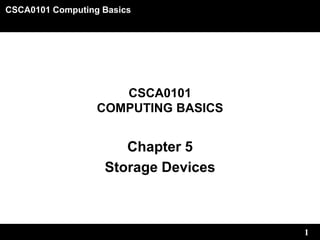This document discusses different types of computer storage devices and their features. It describes primary storage (RAM and ROM), secondary storage (hard disks), tertiary storage (magnetic tapes and optical discs), offline storage (removable media), and other examples like cloud storage and RAID arrays. Storage devices are classified based on volatility, accessibility, mutability and addressability. Primary storage is volatile and allows random access, while tertiary storage is non-volatile and uses sequential access.















































